What is Permission-based email marketing?
Permission-based email marketing is when people choose to receive your emails. This consent helps you send emails that they actually want to read.
When you build your email list this way, you get better results. People are more likely to open and click on your emails, they’re less likely to be marked as spam, and your brand looks good. This means you’ll get better results from your email marketing.
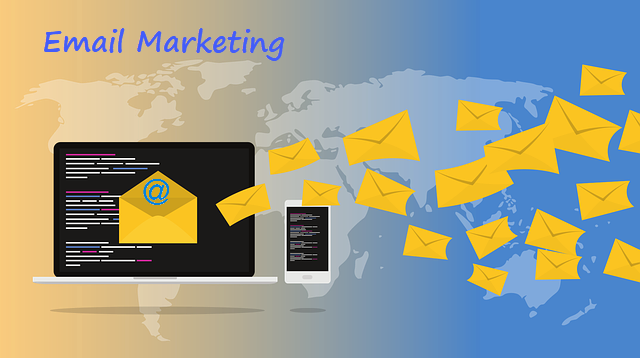
If you send emails to people without their permission, it’s called spam. This can hurt your brand and make it harder for your emails to reach people.
Types of Permissions Used in Email Marketing:
-
Explicit Permission:
This occurs when a person directly and clearly communicates their desire to receive marketing emails. For example, they might fill out a signup form, subscribe to a newsletter, or respond to a call-to-action that explicitly asks for their consent.
-
Implied Permission:
While not as strong as explicit permission, implied permission can be inferred from a person’s actions or behavior. For instance, if someone provides their email address to make a purchase or download a resource, it might be reasonable to assume that they’re also willing to receive occasional marketing communications related to those products or services.
-
Single Opt-in:
In a single opt-in process, a person subscribes to a mailing list by simply providing their email address. Once they submit the form, they immediately start receiving emails.
-
Double Opt-in:
A double opt-in process requires a two-step verification. First, the person provides their email address. Then, a confirmation email is sent to that address, asking them to click a link or enter a code to verify their subscription. This helps to ensure that the email address is valid and that the person truly intends to receive marketing communications.
Email Marketing Statistics:
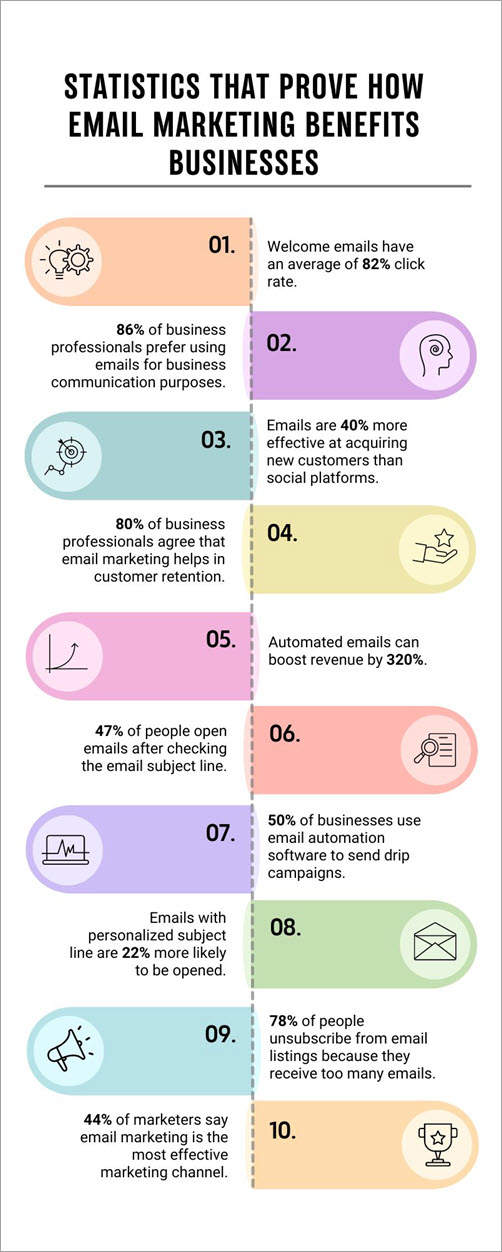
Types of Email Marketing:
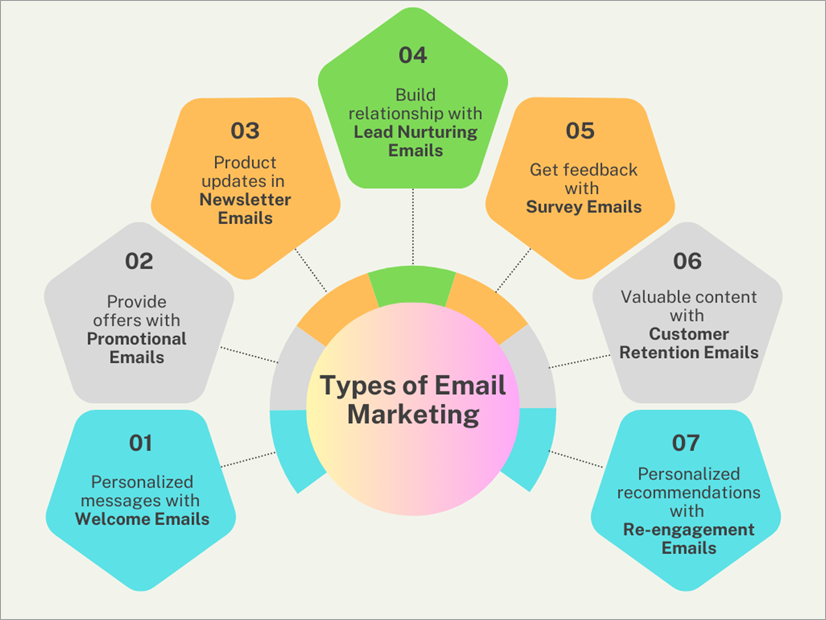
-
Welcome Emails:
Welcome emails are the first impression a new subscriber has of your brand. They should be sent within 24 hours of signup and focus on building a connection. Avoid hard sales pitches and focus on providing value, such as exclusive offers, tips, or a personalized welcome message.
-
Promotional Emails:
Promotional emails are designed to promote products, services, or special offers. They often include coupons, discounts, or limited-time deals to incentivize purchases. Effective promotional emails clearly communicate the value proposition and benefits of the offer.
-
Newsletter Emails:
Newsletter emails inform subscribers about company news, product updates, industry trends, and valuable content. They can include blog posts, tutorials, case studies, or behind-the-scenes glimpses.
-
Lead Nurturing Emails:
Lead nurturing emails are automated emails sent to potential customers to build relationships and guide them through the sales funnel. They provide valuable content, address common objections, and offer personalized recommendations to encourage conversion.
-
Survey Emails:
Survey emails gather customer feedback to understand their needs, preferences, and satisfaction levels. This information helps businesses improve their products, services, and customer experience.
-
Customer Retention Emails:
Customer retention emails aim to keep existing customers engaged and loyal. They can offer exclusive discounts, personalized recommendations, or valuable content related to the customer’s purchase history.
-
Re-engagement Emails:
Re-engagement emails are sent to customers who haven’t been active for a while. They aim to rekindle interest by offering exclusive deals, personalized recommendations, or information about new products or services.
Best Practices for Permission-based email marketing:
1. Get Permission:
- Clear Opt-in: Implement a clear and easy-to-find opt-in option on your website or signup forms.
- Double Opt-in: Consider using a double opt-in process to verify email addresses and ensure genuine consent.
2. Plan and Execute:
- Regular Communication: Stick to a schedule for sending emails that works for your readers.
- Campaign Tracking: Monitor key metrics like open rates, click-through rates, and conversions to measure campaign effectiveness.
3. Maintain a Clean List:
- Avoid Purchased Lists: Never buy or rent email lists, as this can lead to spam complaints and a damaged reputation.
- Easy Opt-out: Provide a clear and accessible link in every email so subscribers can unsubscribe at any time.
- List Hygiene: Regularly clean up your list by removing inactive or bounced email addresses to improve deliverability and engagement.
4. Deliver Value:
- Relevant Content: Send personalized, informative, and valuable content that aligns with your subscribers’ interests.
- Avoid Overwhelming: Strike a balance between sending enough emails to stay top of mind without bombarding subscribers.
5. Segment Your Audience:
- Targeted Campaigns: Segment your subscribers based on demographics, behavior, or preferences to send more relevant and engaging content.
6. Respect Privacy:
- Data Protection: Handle subscriber data responsibly and comply with relevant privacy regulations. Do not share your subscriber’s email address with a third party without their consent.
- Transparency: Clearly communicate your privacy policies and how you use subscriber information.
Permission may ensure your Contacts are getting what they receive, and it is a profitable strategy that will pay for itself. In addition, a proper CRM solution will help categorize the contacts, and sending campaigns or promotional emails will be a hassle-free process.
So one of the significant advantages of permission-based marketing is that advertisers can concentrate their efforts on those prospects that are most likely to turn into buyers.
When a customer selects themselves by asking for more information, it shows that they have a genuine interest in what the business is offering. As a result, these customers are more likely to purchase and to spend more money when they do so.
Benefits of using Email marketing:
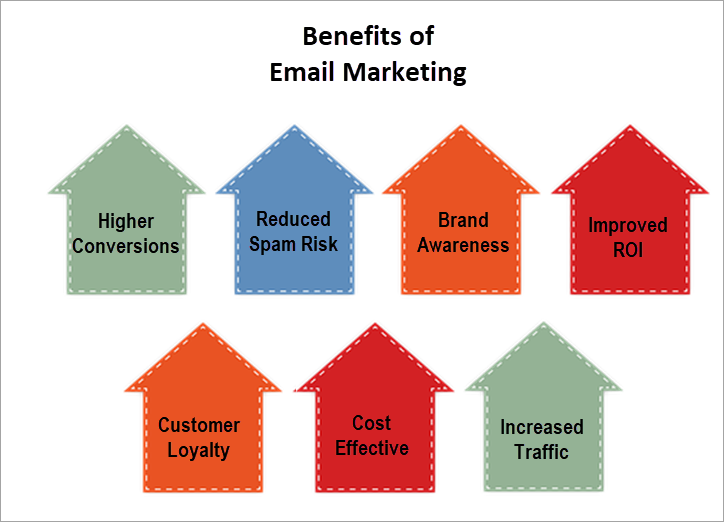
-
Higher Conversions:
Subscribers who have explicitly consented to receive your emails are more likely to open, click, and engage with your content, leading to increased conversions.
-
Reduced Spam Risk:
Permission-based emails are less likely to be marked as spam, ensuring better deliverability and reaching the intended audience.
-
Enhanced Brand Awareness:
Regularly sending valuable and relevant content builds brand recognition and strengthens customer relationships.
-
Improved ROI:
Targeted email campaigns can deliver a higher return on investment by reaching the right audience with the right message.
-
Increased Customer Loyalty:
Delivering personalized and valuable content can foster loyalty and encourage repeat business.
-
Cost-Effective:
Email marketing is a highly affordable and effective way to reach your target audience unlike other mediums.
-
Increased Website Traffic:
Including relevant links to your website or blogs in your emails can drive more visitors and generate leads.
How OfficeClip Helps Businesses with Email Marketing?
OfficeClip’s Campaign Module is a powerful tool that can streamline and enhance your email marketing efforts. Here’s how it can benefit your business:
1. Create and Design Campaigns:
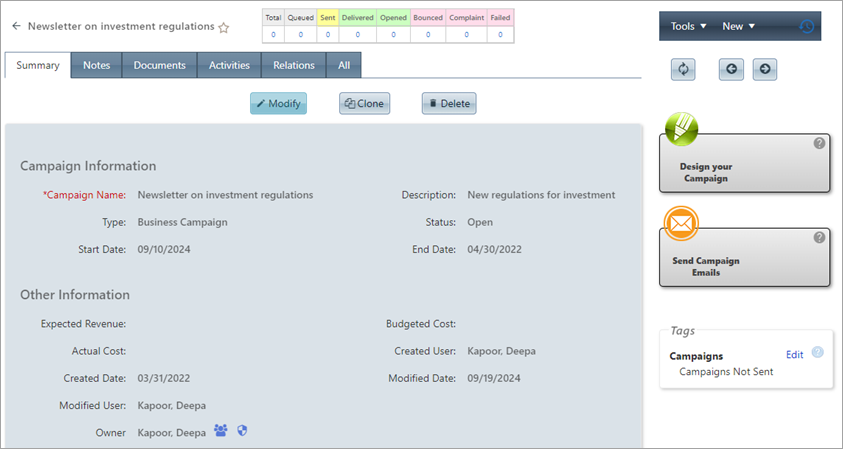
Easily create and customize campaigns using pre-built templates or design your own from scratch.
2. Send Campaigns:
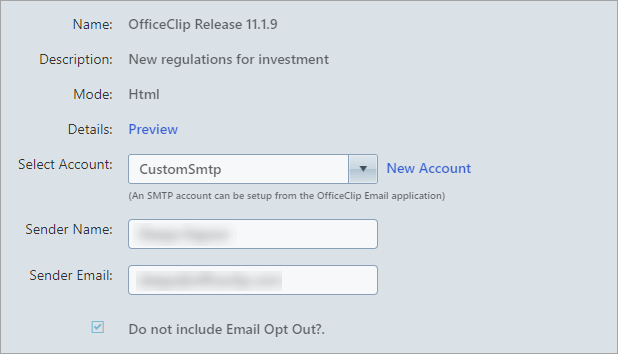
Utilize your own SMTP account or integrate with popular third-party providers like Sendinblue, Amazon SES, or Mailjet to send bulk emails seamlessly.
3. Target Specific Audiences:
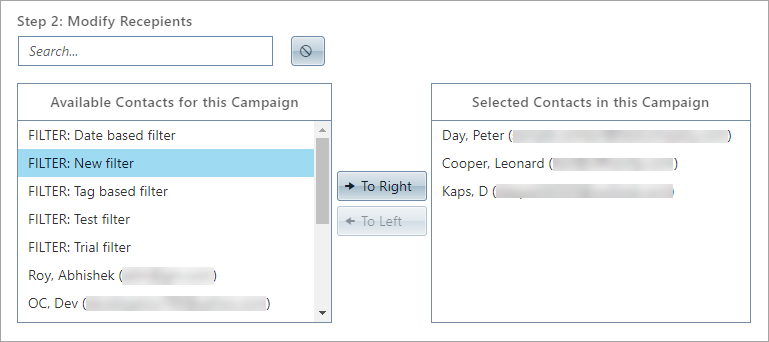
Use tags or filters to send campaigns to specific segments of your subscriber list.
4. Automate Workflows:

Set up automated rules to trigger campaigns based on user actions or data, such as sending welcome emails or follow-up messages.
5. Track Performance:

Monitor the status of your campaigns, including delivery rates, open rates, click-through rates, and bounce rates, to measure effectiveness.
Conclusion:
Permission-based email marketing, to a large extent, helps in building brand value and increase revenue. Most importantly, it also helps to build relationships between your company and customers.
By leveraging OfficeClip’s Campaign module, businesses can improve email deliverability, increase engagement, and drive better results from their email marketing efforts.
Data Source:
